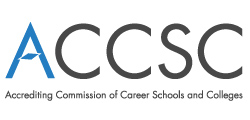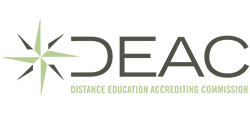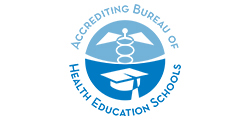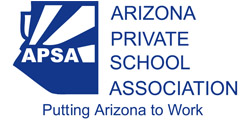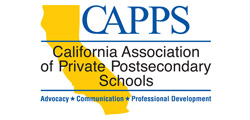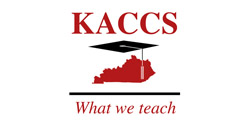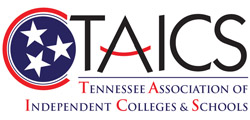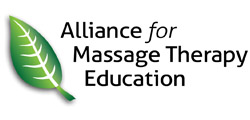Badge Evidence | Completed Courses (4 Hours Each)
CS101Setting Up an Effective Career Services Department
This course offers strategies to provide employment and job search skills training that enables students to seek jobs in the field for which they are trained. You'll learn how to offer comprehensive career services regardless of whether your career services department is staffed full- or part-time. The course provides strategies for an institution to set up a Career Services Department, enhance and run it, and measure results. It describes how a successful career services department can ensure that your students have the skills and self-confidence to succeed in the workplace. You'll learn techniques to increase placement rates and reach out to the community to meet and maintain relationships with hiring decision-makers.
CS102Empowering Students to Find and Secure the Right Job
In this course, you will be given tools to help your students find the job that's right for them, present themselves impressively on paper, and interview with ease. This course is designed so you can successfully support your students in four phases of their job search: doing a targeted job search, writing a powerful resume and cover letter, presenting professionally, and developing effective interview skills.
CS104Developing a Social Media Strategy for Career Services
Social media is critical tool for career services professionals to interact with and reach their constituent groups yet many career professionals aren't aware of how to develop a purposeful social media strategy. Without a social media strategy, career services departments risk losing relevance with their audience, and they also lose the opportunity of harnessing social media to achieve department goals. This course describes the phases of planning and implementing a social media strategy for your career services department. Each module is based on the fundamental steps of preparing a comprehensive and measurable plan to achieve the goals of the career services department.
CS105Setting Up an Effective Alumni Association
Educational institutions have opportunities to create unique alumni associations which will look and feel more like alumni communities. This course will show you how you can create active alumni communities to increase enrollment, retention and placement for your entire institution. You will learn how to provide your alumni with valuable services and how to seek their help to enhance your educational programs and career services, as well as marketing and admissions. From getting started to setting up an alumni data base management system and determining the institution's return on investment, this course provides you with operational strategies for establishing an effective alumni association.
CS106Becoming an Effective Job Developer
Although job developing requires a mix of critical skills, many career advisors are forced to learn them through the "sink or swim" method. They're often asked to immediately make a specific number of cold-calls daily. They learn that "job developing" is synonymous with cold-calling. It isn't. This course covers how to properly prepare for job developing, how to prospect, prioritize employer contact, and communicate with employers to address objections, get job orders, manage them to completion, and continuously engage employers and candidates to develop long-term partnerships. Job developing should be more comprehensive than a simple list of employers to cold-call.
CS107Advising Students on Using Digital Career-Marketing Strategies
In today's world where jobs are posted online, matching algorithms screen digital résumés, and recruiters source candidates online, students must market themselves online. Writing a résumé and cover letter alone is no longer an adequate skill set for career seekers to successfully find and secure employment as well as manage, advance, and transition their career throughout life. Students must know how to digitally market themselves, and 21st century career advisors must know how to advise them. This course will help you advise students on developing digital career-marketing strategies for career success.
CS109REmpowering Justice-Involved Learners for Career Success
Working with justice-involved learners can feel like navigating a maze of legal constraints, stigma, and high-stakes hiring processes. This course equips you with innovative, real-world strategies to unlock fresh employment opportunities for these individuals, while elevating your own professional impact.
Discover powerful tactics for instilling confidence, guiding disclosure conversations, and crafting “turnaround talks” that reframe negative narratives. You’ll gain an insider’s view into how employers assess risk, why fair chance hiring matters, and how to overcome common obstacles to employment. By the end, you’ll be fully prepared to coach learners to confidently navigate the employment landscape. Strengthen your toolkit and become a catalyst for meaningful opportunities – enroll today!
CS110Providing Career Services for Students with Disabilities
Students with disabilities represent a unique minority group within higher education. Despite being the largest minority group in the world, all too often their access to and inclusion in programs and services comes as an afterthought. Career services practitioners pride themselves in their ability to serve diverse populations, yet many remain untrained in working with disabled students. This course helps career services practitioners understand federal legislation basics as they relate to disabled students, the unique challenges they face, and characteristics of the population as well as practical resources and career services strategies to help overcome their unique barriers to employment.
**While the course addresses interaction considerations for those with deafness, blindness, learning disabilities, acquired brain disabilities, and physical disabilities, it shouldn't be expected that the course will cover all possible disabilities you may want to specifically learn about. It provides a broad overview.
**While the course addresses interaction considerations for those with deafness, blindness, learning disabilities, acquired brain disabilities, and physical disabilities, it shouldn't be expected that the course will cover all possible disabilities you may want to specifically learn about. It provides a broad overview.
CS111Providing Career Services for LGBTQ Students
There are millions of lesbian, gay, bisexual, transgender, and queer (LGBTQ) job seekers struggling to find careers and even hold down a job, due in part to their sexual orientation and gender identity. What amplifies this issue is the fact that many college career advisors who are supposed to help struggling jobseekers are not trained to address the unique struggles their LGBTQ students face in their career development. This course equips career advisors with the perspective, knowledge, and practical skills necessary to provide quality career services for their LGBTQ students, who greatly need their assistance.
CS112Advising Students on Developing Modern Job Search Documents
In the most competitive economy ever, crafting powerful job search documents, communicating strategically with employers, and presenting evidence of one’s qualifications won’t even necessarily get candidates jobs—it’ll barely get them interviews. This course covers advanced writing techniques, shows examples, and offers detailed strategy explanations to help career professionals enhance their ability to teach students how to craft modern job search documents and strategic employer communications. You'll be able to more effectively advise students on how to use impactful strategies that differentiate them from competitors through résumés, letters, portfolio evidence, and strategic post-interview correspondence.
*This course also contains several downloadable resources to be used in your career center.
CS113Becoming an Effective Career Coach
Effectively coaching students to achieve their goals in a way that builds autonomy, confidence, and accountability is fundamental to the role of a career services professional. Despite this fact, many career professionals have never engaged in professional development to build their coaching skills. This course helps career services professionals develop fundamental coaching skills so they can act as a catalyst and facilitator in assisting students to work towards their self-identified goals, with the belief that self-identified goals lead to increased student buy-in and motivation for attainment. Learn to put practical coaching techniques into action to maximize your results with students.
*This course is relevant to a variety of career support professionals regardless of titles such as career counselors, advisors, coordinators, or "case managers" serving a variety of populations which may include students, out-of-school youth, or dislocated workers (youth or adults).
CS114Developing Effective Job and Career Fairs for Students
School hiring events are staples for many institutions, whether ground-based or virtual. They are a large undertaking. However, when done correctly, these events should yield many positive results for students, employers, and the school. This course examines each part of the process involved in a school hiring event: from the planning and ideation phase, to budgeting, staffing, logistics, marketing, student preparation, and a complete process for post-event surveying and follow-up. Beyond practical tips, ideas, and strategies, this course will provide a resource of documents that will help support a robust and dynamic school hiring event.
ED101Effective Teaching Strategies
This introductory course covers the essential roles of a teacher and the competencies required to be a successful instructor in an educational institution. Proven techniques and strategies for planning and preparation are presented and discussed. In addition, the course offers effective methods for conducting the first class meeting and delivering course content. This course provides a solid foundation for new instructors and serves as an excellent refresher for more experienced instructors.
ED104Class Management Strategies
This course provides methods and techniques for managing students and class activities. We start by reviewing the steps instructors need to follow as they introduce a class to new students. We then discuss strategies to effectively deal with unfocused and challenging students. The course ends by describing common mistakes made by instructors and ways to avoid them.
ED110Time and Stress Management for Instructors
Outstanding teachers serve their students by guiding them through their coursework and motivating them to complete program requirements. Instructors at educational institutions are often faced with high stress resulting from heavy teaching loads and limited time. When teachers cannot manage their own time and stress, they cannot fully serve the needs of their students. This course will show instructors how to manage time and stress in their lives and teach some of these skills to their students.
ED112Influencing Student Motivation
This course is intended to offer a practical explanation of how an instructor’s behaviors and choices can influence the motivation of students. It is not intended to be a theoretical or academic treatise about motivation. Module 1 offers useful tips that may help instructors to motivate students. Students’ security and autonomy are described as they influence motivation during instruction, questioning, activities, and evaluations. This is followed by a discussion of how motivation can be improved by enhancing students' sense of autonomy when making assignments, selecting instructional methods, implementing classroom procedures, and developing evaluations. In Module 2, intrinsic and extrinsic motivators are defined and compared. Finally, a variety of "miscellaneous motivators" are offered for instructors to consider.
ED113Managing the Adult Classroom
This course compares and contrasts four styles of classroom management. The course includes "virtual visits" to animated classrooms where participants observe four instructors who exhibit different management styles. The style that is preferred by most students is identified and described, and suggestions are offered on how instructors can modify their personal style to increase their effectiveness. A four-step model for developing successful classroom management strategies is presented and is followed by a discussion of a practical, behavioral approach to classroom management. Characteristics that foster good discipline in the educational institution and in the classroom are listed and explained, and tips are offered that can improve both institution-wide and classroom discipline. Finally, a number of scenarios involving common discipline problems are described.
ED124Flipping Your Classroom
This course will provide you with a basic overview of the background of an innovative instructional strategy called the Flipped Classroom. This instructional strategy is gaining popularity and differs from traditional instructional strategies. This course will discuss the background, driving factors, benefits, barriers, theoretical grounding, how to prepare to flip your classroom, and the components of the Flipped Classroom. The impact on student learning will also be discussed in addition to instructor preparation and the future of the Flipped Classroom.
ED126Integrating Technology into Education
While educators increasingly use technology in the lab setting, many don't know where to start when trying to use it during didactic instruction. Furthermore, administrators have a hard time rolling out these initiatives. This course will go through the stages of a solid rollout plan to take advantage of available technologies. It will also discuss how to teach with technology as an enhancement to education, not a replacement. This course helps instructors, administrators and support staff to better understand how to use these tools.
ED205Enhancing Students' Professional Skills
Awareness has grown in recent years that, to be effective today, learning must include more than knowledge and "hard skills," or technical ability. In a world where work is often team-based and project-driven, teaching needs also to encompass attitudes and social competencies. This course will describe ways students can enhance their professional skills across the curriculum. Strategies for teaching effective personal interaction and ways to support student professional growth and development will be discussed. This course will also explain how students can improve their writing skills and computer literacy across the curriculum.
ED312Using Learning Preferences to Engage Allied Health Students
Have you been frustrated in your allied health classes when students don't "get it"? Have you tried repeatedly to teach a difficult student and it didn't seem to work? Sometimes it is a difference in learning preferences that creates this misunderstanding. In this themed course, you will learn about different learning deliveries that will engage your health students as well as how to teach to them in a variety of practical ways that are fast, easy, and effective. This course follows an interesting "fairy tale format," with several characters you will meet here and may see in your classroom.
ED405Essential Teaching Strategies
This course emphasizes teaching strategies that can be implemented within different types of lessons to promote teacher proficiency, student motivation, and achievable outcomes. Topics relating to teaching methods include direct, indirect, interactive, and independent instruction. By utilizing various teaching strategies and methods, an instructor can approach teaching topics in a variety of ways. The goal of this course is to help develop a better understanding of essential teaching strategies, and produce tangible resources to help implement plans, strategies, and ideas at your institution. In addition to lecture videos, resource links, and assessments, you will be able to utilize Journal and Learning Activities, which will continue to be useful after successful completion of the course.
ED406Motivating Others
Motivation can be the difference between success and failure. In this course, the idea of how motivation impacts people will be discussed. Activities will focus on improving motivation in students, and other people you interact with, as well as yourself. The goal of this course is to help develop a better understanding of the topic, and produce tangible resources to help implement plans, strategies, and ideas at your institution. In addition to lecture videos, resource links, and assessments, you will be able to utilize Learning Activities, which will continue to be useful after successful completion of the course.
ED409Gamification in the Classroom
This course will explore the field of gamification and the way that gaming and gaming elements have come to impact our everyday lives, and can improve our courses. Focusing on easy-to-implement concepts, this course will help you to begin utilizing gamification elements to increase learner engagement and motivation, and increase overall student success.
The goal of this course is to help develop a better understanding of the topic and produce tangible resources to help implement plans, strategies, and ideas at your school. In addition to lecture videos, possible resource links, and assessments, you will be able to utilize the Journal and Learning Activities.
EL101Designing and Developing Online Courses
This introductory course will provide you with the knowledge and skills to create successful online courses, whether for faculty-supported distance education delivery or as a supplement to classroom instruction. You will learn to design and develop online courses that have structural integrity and navigational simplicity with a focus on student-centered learning and intellectual interaction. The course covers various learning activities that are supported in an e-learning environment and describes the typical components of an online course. We will provide you with the media strategies and course design methodologies that will allow you to develop online courses in an effective and efficient manner.
EL102Online Teaching Techniques
Your degree of success as an online instructor relies heavily on several factors, among which are your level of preparedness before the date on which the course is launched; your ability to make a smooth transition into the roles and responsibilities associated with teaching in an online environment; and the effectiveness and efficiency with which you manage learners, instructional transactions embedded in the course as well as the learning environment. In this course, you will learn how to project your authority and presence into the e-learning environment, build a relationship with each learner, promote and nurture learner participation, provide informative and constructive feedback in a timely manner, minimize attrition, manage communications, manage unacceptable behavior and resolve disagreements.
EL103RTeaching Online: A Student-Centered Approach
This course will provide you with the knowledge and skills to successfully author, teach, assess, and revise online courses. You will learn to develop a course framework with consistent modules. Building an online community and constructing a dynamic syllabus are important in helping you communicate with students. You will also learn how to develop an assessment plan that includes peer and self-assessment. No online course is complete without a comprehensive revision cycle. This course will walk you through the process of "closing the loop" to create a complete revision and improvement plan for your online course. We will provide you with ideas for student-centered learning that includes activities and intellectual interactions using a variety of technological tools.
EL104Teaching and Organizing a Virtual Learning Environment
This course will provide you with basic information to teach in a virtual learning environment and understand the importance of organizing course content. You will learn about the important role technology tools play in teaching and organizing an online course. You will also learn the difference between synchronous and asynchronous learning. As the components of each are discussed, you will further identify appropriate methods, develop guidelines, organize content, and establish a pattern of teaching for each method.
EL105Online Language: Communicating with Students
This course will provide you with information to help you effectively communicate with students and encourage communication among students in an online environment. You will learn the importance of facilitating instructor-to-student (I2S), student-to-instructor (S2I), and student-to-student (S2S) communication. Technology tools play a vital role in the communication process and several are discussed in this course. In addition, discussion is also provided to help you further understand how to manage and measure communication in an online course and help students communicate effectively.
EL106Evaluating Student Learning in Online Courses
This course will provide you with the knowledge to effectively evaluate student learning in an online environment. Technology tools play a vital role in the evaluation process and several are discussed in this module. Discussion will also be provided to help you further understand how to complete formative and summative assessments, as well as the advantages and disadvantages of objective and subjective assessments. Value-added assessments are also discussed in light of how they can be completed and provide feedback for course revision.
EL107RDesigning Dynamic and Technology-Rich Learning Environments
This course outlines the main characteristics of "dynamic" course design for blended instruction and highlights effective teaching methods that facilitate the learning process. Participants in this course will be able to customize the design principles and methods presented here to suit their individual professional context.
EL108Preparing Students to Become Good Online Learners
This course will provide you with strategies and techniques to help prepare students for the online environment. To do so, you must also assess your strengths and weaknesses as an online instructor. As you help students assess their readiness for online learning, you are also preparing them for the expectations and realities of the online environment. By identifying students' strengths and weaknesses, you can provide guidance to help them achieve the learning outcomes. This course not only notes the necessary technical skills, it also discusses non-technical skills as well as techniques for successful learning and helping students develop their online persona.
EL109Using Rubrics to Enhance Online Learning
This course will inform you about the purpose of rubrics and will provide you with the techniques to develop rubrics as an assessment tool for student performance, processes and products. This course will explore types of rubrics, the role rubrics play in assessment, as well as the use of rubrics in evaluating elements of your online course to ensure your course is truly student-centered.
EL110Effective Use of Social Media in Online Courses
This course will provide you with strategies and techniques to help use social networking in the online environment. It provides an overview of social networking, media hosting and sharing, microblogging and blogging. An introduction to each will be provided, and content development, policy, facilitation and assessment will all be discussed. Suggested activities will also be provided.
EL112Workload Management Strategies for Teaching Online
This course will provide you with strategies and techniques to help you reduce your workload in the online environment. The course begins with an overview of good principles for education and questions to consider prior to developing Workload Management Strategies (WLMS). This course also provides WLMS for teaching online, communicating and collaborating, and revising your online course.
EL120Fully Online Doesn't Mean Inactive
Active and passive learning are critical concepts to ponder for online learning. Each one has positive benefits when explored and applied in the context of learning and the designing of instruction. There is, however, a difference between passive and inactive. One is an intentional part of learning while the other is the absence of something. We will explore these and other concepts in this course. In addition, strategies will be shared that will enable educators to make their online instruction more engaging and beneficial for learners.




